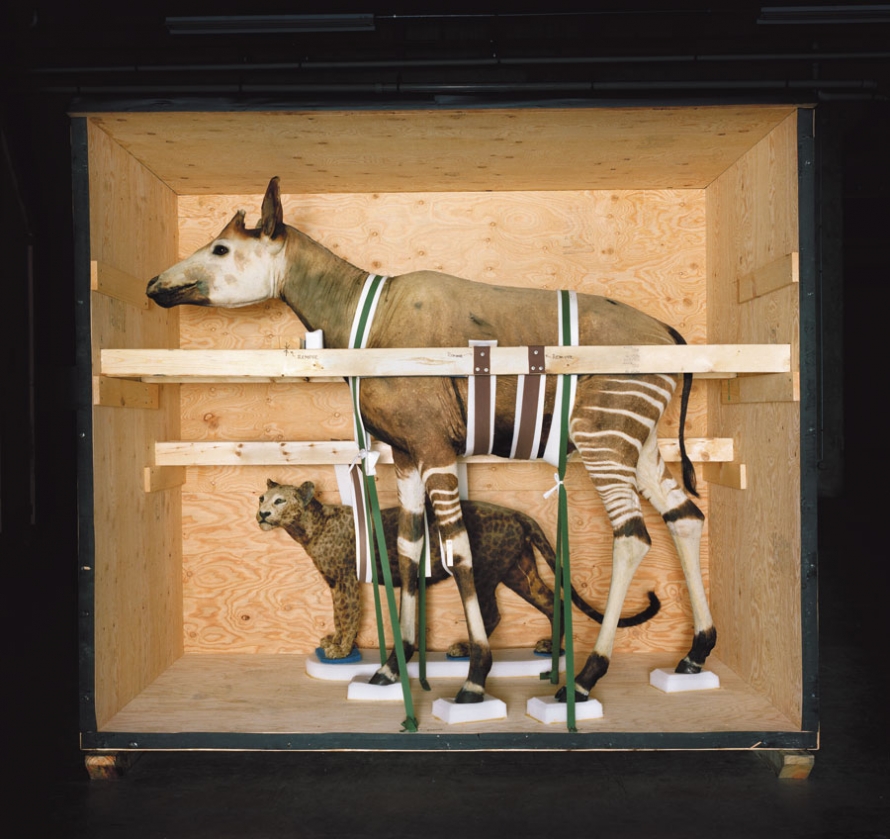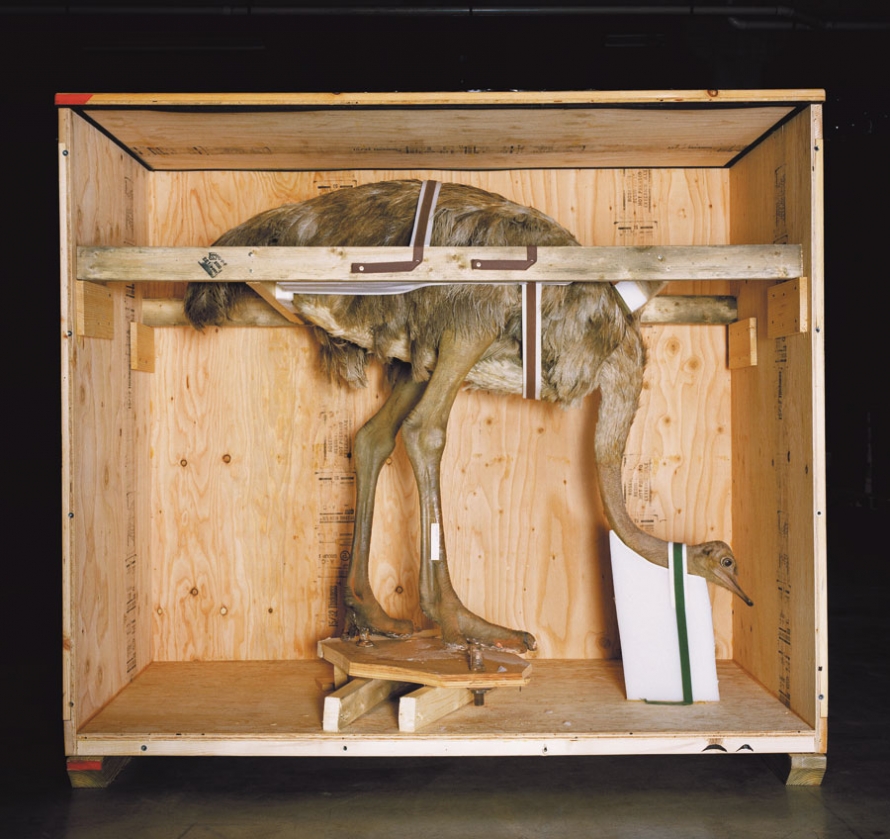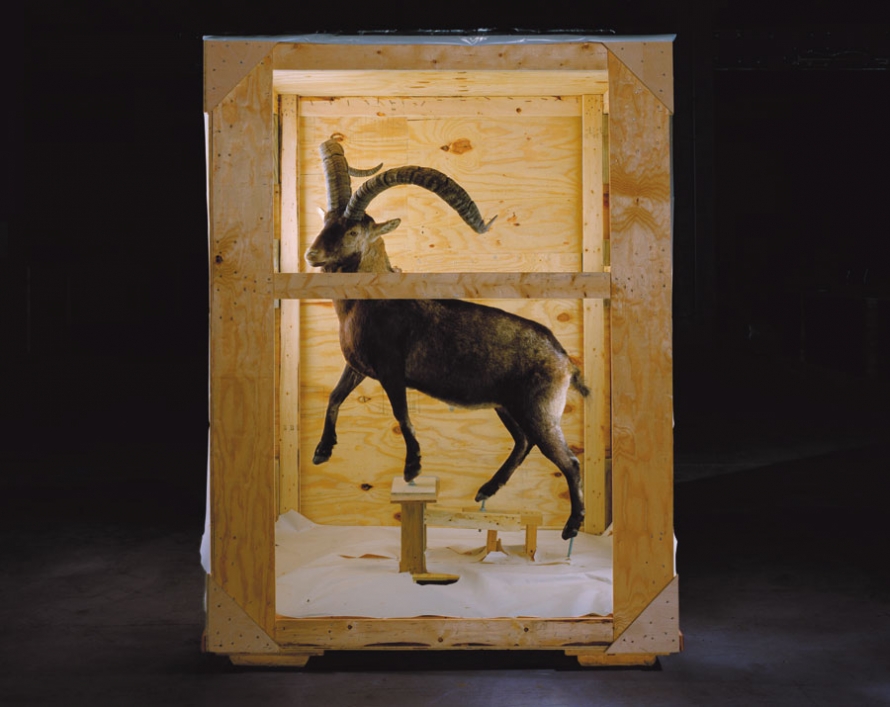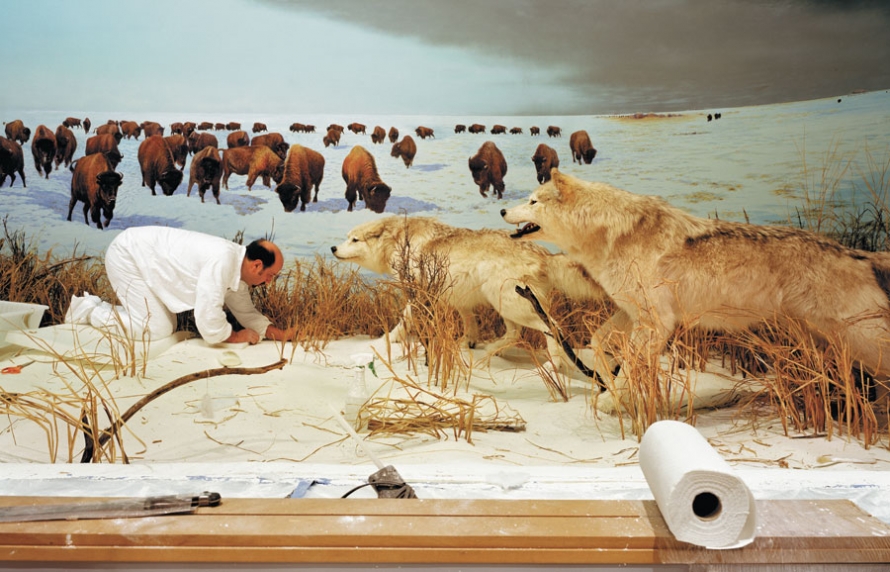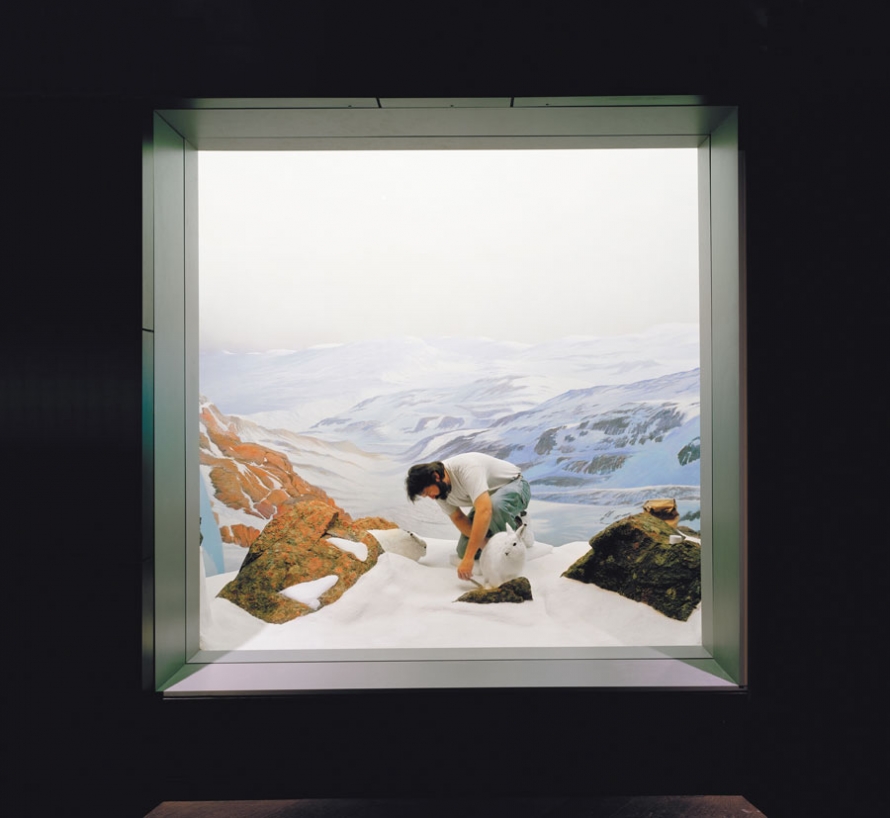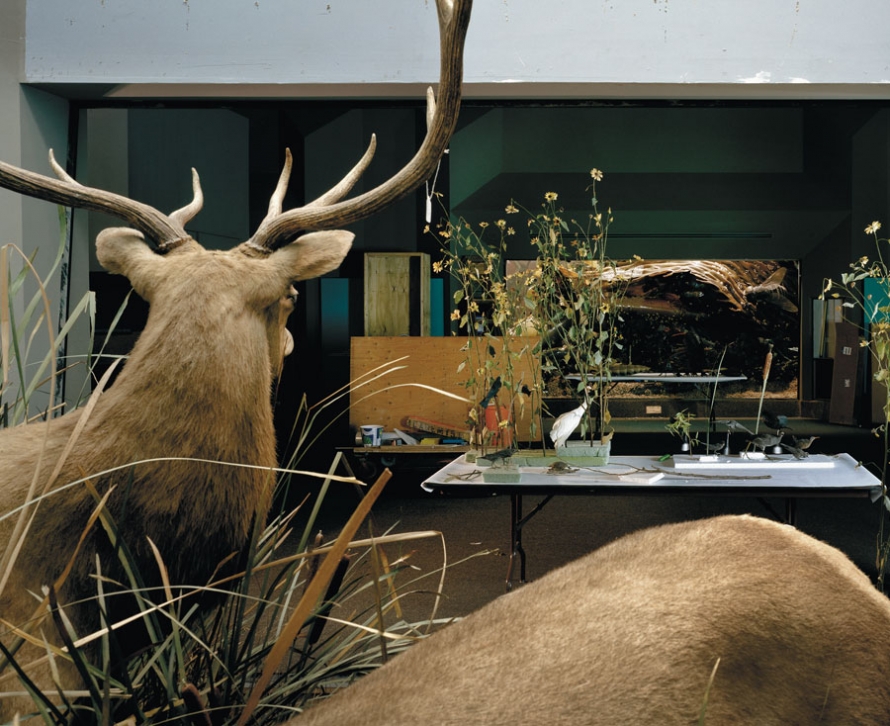Richard Barnes’s new book, Animal Logic, his first monograph, is currently my favorite new art book. For anyone mesmerized by natural history museums as a child, Barnes’s photographs are dislocating, off-putting adult hocus-pocus—portraits of animals in various states of preservation and transit, removed many degrees from anything remotely wild.
Richard Barnes’s photographs are in numerous public and private collections, including the Metropolitan Museum of Art. He was a recipient of the Rome Prize in 2005. All photos courtesy Princeton Architectural Press, copyright the artist, all rights reserved.
What drew you to natural history museums as a subject?
I have been interested in museums and especially natural history museums for a long time. The photographs from Animal Logic have their genesis in my time working as the excavation photographer for the University of Pennsylvania/Yale University excavations at Abydos, Egypt. After a couple of field seasons in Egypt, I became interested in where the artifacts we were extracting from the ground were ultimately interred. I began photographing in the Egyptian Museum in Cairo, concentrating on a small section of the museum dedicated to animal mummies (see the front section of the book). This led me to working specifically with collections in natural history museums, the first of which was the California Academy of Science in San Francisco, followed by many more museums throughout the world. I often seek out museums under renovation where the collection is often either being put into deep storage or is in a state of transition.
Did you ever build dioramas as a child?
I can’t remember making dioramas as a child, however I have always been interested in architecture and the theatre, especially as it relates to the physical stage and the idea of the “suspension of disbelief” as one experiences it while watching a play or looking at a diorama. I am drawn to museum storage, archives and research facilities, and to working behind the scenes, as similar to what happens in the wings or backstage during a theatrical performance where the work of creating a “credible reality” on stage happens. Dioramas are windows into worlds which are reanimations of animals and plants very much dead, but through a willingness to engage in a suspension of disbelief, we bring them back to life in a sense. I am captivated by this seeming contradiction, and often seek to engage the viewer of my photographs by taking it one step further and including actual human beings (curators, backdrop painters, construction workers, etc.), within the stage set of the diorama, in the images I make. The deconstructed apparatus of the diorama is made that much more poignant or hyper-real when actual living human beings occupy the spaces once solely reserved for the animals.
What’s it like to see the exhibits deconstructed, to see the animals packed up, even further removed from their habitats?
Museums for me have always been places akin to tombs or mausoleums where 90 percent of the collection lies buried, out of site in deep storage, as opposed to the 10 percent on view in the galleries above. I remember showing images I’d done of taxidermied animals in crates at the Smithsonian Institution to a curator I was working with there and she remarked that the animals seem “twice dead.” An apt description for the crated animals first culled from nature, then reanimated in the dioramas, finally crated up and “entombed” in an off site storage facility. For how long is anyone’s guess?
Is photography an act of preservation? Can you relate artistically to these elaborate exhibits?
Yes, definitely I see photography as an act of preservation. All my work over the years has been geared to this end. Starting with my position photographing excavated artifacts in Egypt, to my first book and photographic installation titled, “Still Rooms and Excavations,” in which I documented the disinterment of a 19th-century burial ground from beneath the foundations of the California Palace of the Legion of Honor in San Francisco. Over 800 intact human burials, forgotten for nearly 70 years, were exhumed to make room for new galleries at the museum. This project solidified my interest of the role of the museum in determining what is worthy of being saved and what is expendable as and ongoing subject for investigation. My images of the excavation and the subsequent traveling exhibition that I put together, brought to light a forgotten chapter of San Francisco history which the museum had no interest in.
In my current work I hold the title of the 2009 Sidman Fellow in the Arts at the University of Michigan Institute for the Humanities. My exhibition/installation at the Institute for the Humanities is titled “Past Perfect/Future Tense, and includes a grid of black and white images printed from glass plates dating from 1899 to the 1920s. I doubt these negatives, I found buried in the files of the paleontology department archives, hadn’t been looked at in over 50 years. In this regard preservation and re-interpretation are key to my work.
What are you working on now?
“Past Perfect/Future Tense” was created specifically for the Institute for the Humanities at the University of Michigan and will open in September simultaneously with another exhibition, “Unnatural History, the Museum Unveiled,” at the University of Michigan Art Museum. In early October a mid-career retrospective, titled “Animal Logic, Photography and Installation by Richard Barnes,” will open at the Cranbrook Museum of Art/Cranbrook Institute for the Sciences.

